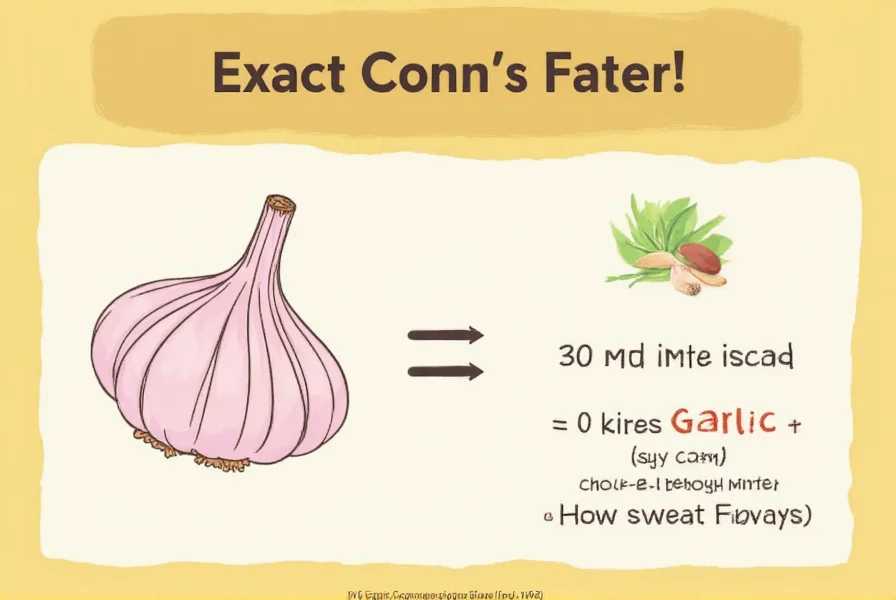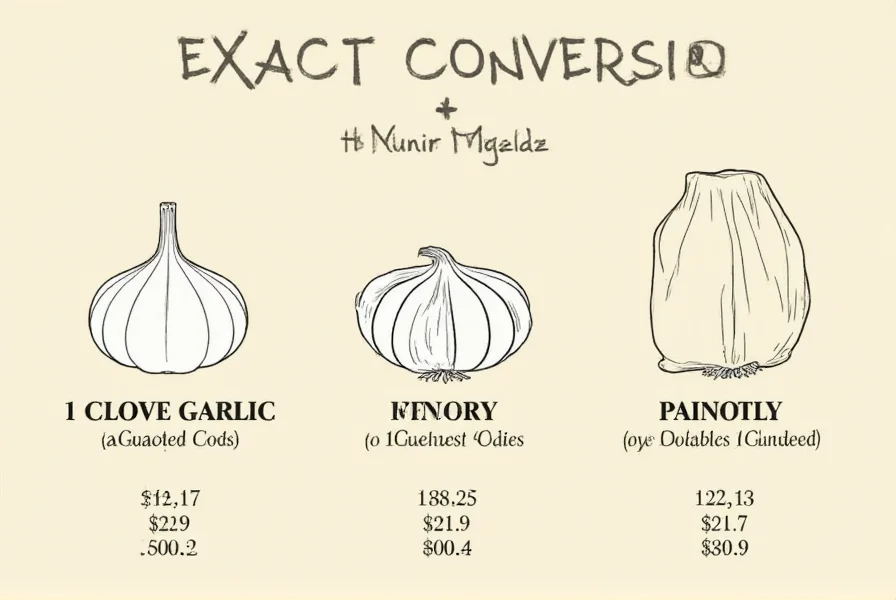Understanding garlic measurements is crucial for consistent cooking results. Many home chefs struggle with recipe conversions between whole cloves and minced garlic, leading to dishes that are either bland or overwhelmingly garlicky. The exact conversion depends on clove size and mincing technique, but standard measurements provide reliable guidance for most culinary applications.
Garlic Clove to Minced Conversion Chart
Garlic cloves vary in size, affecting the final minced quantity. Here's a detailed reference for accurate substitutions:
| Garlic Clove Size | Whole Cloves | Minced Garlic | Garlic Paste Equivalent |
|---|---|---|---|
| Small | 1 clove | 1/4 teaspoon | 1/8 teaspoon |
| Medium (standard) | 1 clove | 1/2 teaspoon | 1/4 teaspoon |
| Large | 1 clove | 3/4-1 teaspoon | 3/8-1/2 teaspoon |
| Extra Large | 1 clove | 1-1 1/4 teaspoons | 1/2-5/8 teaspoon |
Factors Affecting Garlic Measurement Accuracy
Several variables influence the precise minced garlic yield from a single clove:
- Clove maturity - Older bulbs produce larger, drier cloves with less moisture content
- Minced texture - Finely minced versus roughly chopped affects volume significantly
- Moisture content - Freshly harvested garlic contains more water than stored bulbs
- Packing density - How tightly you pack the minced garlic into measuring spoons
For professional results, consider using a kitchen scale. One medium garlic clove weighs approximately 3-7 grams (peeled), yielding 2-4 grams of minced product after accounting for moisture loss during preparation.

Practical Measurement Techniques for Home Cooks
When precise measurements matter in delicate recipes, try these professional techniques:
- The water displacement method - Fill a 1 teaspoon measuring spoon with water, then add minced garlic until water reaches the 1 1/2 teaspoon mark (the garlic displaces 1/2 teaspoon of water)
- Garlic press calibration - Measure output from your specific press to understand its yield per clove
- Batch mincing - Mince multiple cloves together for more accurate volume measurements
Remember that roasted garlic yields less volume than raw due to moisture loss during cooking. When substituting roasted for raw garlic, use approximately 25% more by volume to achieve similar flavor intensity.
Common Garlic Measurement Mistakes to Avoid
Many home cooks make these critical errors when converting garlic measurements:
- Assuming all cloves are equal in size and potency
- Measuring minced garlic before draining excess moisture
- Using volume measurements for critical recipes instead of weight
- Not accounting for garlic age and storage conditions
- Substituting jarred minced garlic using the same conversion (it contains preservatives and has different density)
For sensitive dishes like aioli or garlic-infused oils, consider using a garlic zester for the most controlled flavor distribution. This technique provides approximately 1/8 teaspoon of garlic zest per medium clove, offering more nuanced flavor than minced garlic.
Garlic Substitution Guidelines for Special Dietary Needs
When fresh garlic isn't suitable, these alternatives maintain flavor balance:
- Garlic powder - 1/8 teaspoon powder = 1 medium clove (use in dry rubs and spice blends)
- Garlic salt - 1/4 teaspoon = 1 medium clove (reduce additional salt by 1/4 teaspoon)
- Garlic-infused oil - 1 teaspoon = 1 medium clove (ideal for dressings and finishing dishes)
- Black garlic - 1 teaspoon paste = 1 medium clove (adds umami with less pungency)
For those with allium sensitivity, asafoetida (hing) provides a similar savory note at 1/16 teaspoon per garlic clove. Always introduce substitutes gradually, as their flavor profiles differ significantly from fresh garlic.
Professional Tips for Consistent Garlic Results
Chefs recommend these advanced techniques for perfect garlic integration:
- Let minced garlic rest for 10 minutes before cooking to develop full flavor compounds
- For sauces and soups, add garlic gradually while tasting to achieve perfect balance
- When doubling recipes, don't automatically double garlic—increase by only 1.5x to prevent overpowering
- Freeze excess minced garlic in ice cube trays with olive oil for future use (1 cube = 1 clove)
Understanding the precise relationship between whole cloves and minced garlic transforms your cooking from inconsistent to professional-quality. By applying these measurements and techniques, you'll achieve perfectly balanced garlic flavor in every dish without guesswork.
How much jarred minced garlic equals one fresh clove?
Jarred minced garlic typically requires 1/2 teaspoon to equal one medium fresh clove. However, check the product label as concentrations vary. Jarred garlic often contains citric acid and has a slightly different flavor profile, so you may need to adjust to taste.
Does roasted garlic yield the same amount as raw when minced?
No, roasted garlic yields about 25% less volume than raw when minced due to moisture loss during roasting. For recipe conversions, use approximately 1/3 teaspoon of roasted minced garlic to equal 1/2 teaspoon of raw minced garlic (one medium clove).
Why does my minced garlic measurement seem inconsistent?
Garlic measurements vary due to clove size differences, moisture content, mincing technique, and how tightly you pack the measuring spoon. For consistent results, use a kitchen scale (1 medium clove = 3-7g whole, 2-4g minced) or standardize your mincing technique.
Can I substitute garlic powder for fresh minced garlic in recipes?
Yes, use 1/8 teaspoon garlic powder to replace one medium fresh clove (1/2 teaspoon minced). Garlic powder is more concentrated, so start with less and adjust to taste. It works best in dry rubs and cooked dishes, but doesn't provide the same fresh bite as raw minced garlic.
How do I measure minced garlic accurately without a measuring spoon?
Without measuring spoons, use the 'penny test' - a proper 1/2 teaspoon of minced garlic should be roughly the size of a US penny. Alternatively, mound minced garlic to form a small pyramid about 1/2 inch in diameter for a 1/2 teaspoon equivalent.











 浙公网安备
33010002000092号
浙公网安备
33010002000092号 浙B2-20120091-4
浙B2-20120091-4